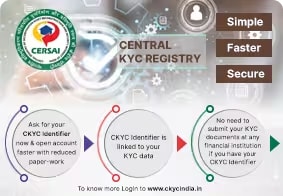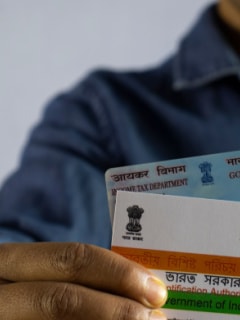Enjoy Zero Charges on All Commonly Used Savings Account Services
- About Us
- MD & CEO letter about the bank
- MD & CEO
- Our History
- Letter to Shareholders on the 1st Annual Report after Merger
- Letter to Shareholders on the 2nd Annual Report after Merger
- Letter to Shareholders on the 3rd Annual Report after Merger
- Letter to Shareholders on the 4th Annual Report after Merger
- Board of Directors
- Awards & Accolades
- News Room
- Investors
- Careers
- ESG
-
Customer care hotlineCall 1800 10 888
-
As per amendment in the Income Tax Rules, PAN or Aadhaar are to be mandatorily quoted for cash deposit or withdrawal aggregating to Rupees twenty lakhs or more in a FY. Please update your PAN or Aadhaar. Kindly reach out to the Bank’s contact center on 1800 10 888 or visit the nearest IDFC FIRST Bank branch for further queries.
-
-
FinFIRST Blogs
Finance
New regime is the new future: Know all the income tax announcements made in Union Budget 2023
Summary: A look at the various announcements made in the personal income tax section of the union budget 2023 speech, including an increase in tax rebate limit and reduction in tax slabs. Read on to know more.

The Hon. Finance Minister of India, Smt. Nirmala Sitharaman, presented the Union Budget on 1st February 2023. The budget carried on with Govt of India’s much talked about “Amrit Kaal vision”, initiated in the previous budget while trying to balance fiscal consolidation with growth sustenance.
As the Union Finance Minister herself admitted, personal income tax is the most awaited segment of any Union Budget. In her latest budget announcement, Mrs Sitharaman addressed the personal income tax section by mentioning that she had five major announcements to make. She also stated that these announcements are aimed at benefitting India’s hard-working middle class.
Tax rebate
Under the existing rules, people with an income of up to Rs 5 lakh were not required to pay any income tax. This was applicable in both old and new tax regimes. The finance minister proposed in the budget that this rebate limit would be raised to Rs 7 lakh in the new tax regime.
Accordingly, if you opt for the new regime, you don’t need to pay tax if your income is below Rs 7 lakhs. However, if you opt for the old regime, you will have to pay tax if your income exceeds Rs 5 lakhs. This change gives an advantage to the new regime as a choice.
Income tax rates
In 2020, the finance minister introduced the new tax regime. It had six income slabs starting from Rs 2.5 lakh. In this budget, the new tax regime structure has been changed, which will see a reduction in the number of tax slabs from six to five. Besides, the tax exemption limit under the new regime has been increased to 3 lakhs.
READ MORE
Let us have a look at the table below that compares the old regime, the new regime and the new regime with the budget 2023 changes.
|
Old Regime |
New Regime |
New Regime after Budget 2023 |
||||
Deductions allowability |
All deductions allowed |
Most deductions are not allowed |
· Standard deduction on salary · Standard deduction on pension · Deduction under section 80CCH for payments made towards Agniveer corpus fund |
||||
Exemptions allowability |
All applicable allowances allowed |
Most exemptions are not allowed |
Most exemptions are not allowed |
||||
Income tax slabs |
Income level |
Income tax Rate |
Income level |
Income tax Rate |
Income level |
Income tax Rate |
|
up to Rs 2.5 lakhs |
Nil |
up to Rs 2.5 lakhs |
Nil |
up to Rs 3 lakhs |
Nil |
||
Above 2.5 lakhs up to Rs 5 lakhs |
5% |
Above 2.5 lakhs up to Rs 5 lakhs |
5% |
Above 3 lakhs up to Rs 6 lakhs |
5% |
||
Above 5 lakhs up to Rs 10 lakhs |
20% |
Above 5 lakhs up to Rs 7.5 lakhs |
10% |
Above 6 lakhs up to Rs 9 lakhs |
10% |
||
Above 10 lakhs |
30% |
Above 7.5 lakhs up to Rs 10 lakhs |
15% |
Above 9 lakhs up to Rs 12 lakhs |
15% |
||
|
|
Above 10 lakhs up to Rs 12.5 lakhs |
20% |
Above 12 lakhs up to Rs 15 lakhs |
20% |
||
|
|
Above 12.5 lakhs up to Rs 15 lakhs |
25% |
Above 15 lakhs |
30% |
||
|
|
Above 15 lakhs |
30% |
|
|||
As can be seen in the table above, the changes will provide major relief to all taxpayers who are opting for the new regime in tax slab.
If your annual income is Rs 9 lakhs, you will pay only Rs 45,000 under the new regime now. This is 5% of your annual income. Before the changes, the tax liability on the same annual income amounted to Rs 60,000. Thus, it is a 25% reduction in your tax liability.
Under the existing tax structure, a person with an annual income of Rs 15 lakhs had to pay a tax of Rs 1,87,500. However, with the changes proposed in the budget, there will be a 20% reduction in the tax liability. The revised tax liability will be Rs 1,50,000.
Standard deduction
The benefit of standard deduction has been extended to the salaried class, pensioners and family pensioners who opt for the new tax regime. This benefit was earlier not available under the new tax regime. With this introduction, a salaried person with an annual income of Rs 15.5 lakhs or more can gain up to Rs 52,500.
Maximum tax rate
In her budget speech, the finance minister pointed out that the highest income tax rate in the country is 42.74%. She said that this is one of the highest tax rates in the world. Accordingly, the budget proposed to reduce the maximum rate of tax. The highest surcharge rate of 37% will be reduced to 25%.
Existing surcharge rates are:
· Income above Rs 50 lakhs and up to Rs 1 crore – 10%
· Income above Rs 1 crore and up to Rs 2 crores – 15%
· Income above Rs 2 crores and up to Rs 5 crores – 25%
· Income above Rs 5 crores – 37%
New surcharge rates are:
· Income above Rs 50 lakhs and up to Rs 1 crore – 10%
· Income above Rs 1 crore and up to Rs 2 crores – 15%
· Income above Rs 2 crores – 25%
This reduction will be effective in the new tax regime. As a result of this reduction, the new maximum income tax rate in India will be 39%.
Leave encashment
The finance minister also proposed to increase the tax exemption on leave encashment drastically from Rs 3 lakhs to Rs 25 lakhs. This is the leave encashment on the retirement of non-government salaried employees. Notably, the exemption was fixed at Rs 3 lakhs in the 2002 budget and has not been tinkered with ever since. The highest basic pay in the government at that time was around Rs 30,000 per month. Thus, this increase in exemption was long overdue.
Default tax regime
It has become obvious from the changes that the government is encouraging taxpayers to embrace the new tax regime. Most of the changes made stand to benefit taxpayers who opt for the new regime. Therefore, it was no surprise when the finance minister declared during the budget presentation that the new income tax regime is now recognised as the default tax regime for individuals, Hindu Undivided Families, Association of Persons excluding cooperatives, Body of Individuals and Artificial Juridical Person. A person who has income under the head “Profits and gains from business or profession” and has opted for the old regime can revoke the option only once. After that, the person will continue to be taxed under the new regime. Any other person can exercise the option of the old regime each year.
She, however, confirmed that citizens opting for the old tax regime will continue to avail of the benefits provided in the said regime.
Conclusion
The regime preference may differ with different levels of income, and you must compare the two tax regimes and the respective tax liability. Also, make sure that you make the most of your tax planning after taking these income tax changes into consideration.
Disclaimer
The contents of this article/infographic/picture/video are meant solely for information purposes. The contents are generic in nature and for informational purposes only. It is not a substitute for specific advice in your own circumstances. The information is subject to updation, completion, revision, verification and amendment and the same may change materially. The information is not intended for distribution or use by any person in any jurisdiction where such distribution or use would be contrary to law or regulation or would subject IDFC FIRST Bank or its affiliates to any licensing or registration requirements. IDFC FIRST Bank shall not be responsible for any direct/indirect loss or liability incurred by the reader for taking any financial decisions based on the contents and information mentioned. Please consult your financial advisor before making any financial decision.
The features, benefits and offers mentioned in the article are applicable as on the day of publication of this blog and is subject to change without notice. The contents herein are also subject to other product specific terms and conditions and any third party terms and conditions, as applicable. Please refer our website www.idfcfirstbank.com for latest updates.


 What's special about us
What's special about us



















